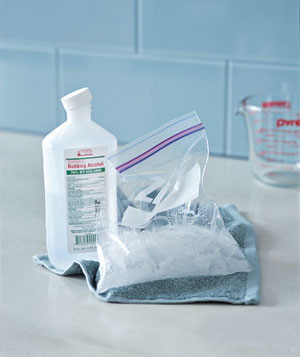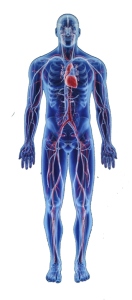DO I SCHEDULE A 60 MINUTE MASSAGE OR A 90 MINUTE MASSAGE
There have been a lot of discussions about whether it’s better to get a 60 or a 90 minute massage. I tend to believe a 90 minute massage is typically a better deal. Yes, it does bring the practitioner more money as many would think, but there are other reasons why I endorse a longer massage.
Beyond money, clients who get a 90 minute massage get more of their body worked upon. They also get more time if they need extra attention focused toward a specific pain or ache. For instance, during a typical 90 minute massage I am able to work 30 to 45 minutes on someone’s back and shoulders (the most typical area for pain & soreness), and still have time to work the rest of the body while prone (facing down), and supine (facing up). I am able to provide full relaxation techniques if desired.
FOOT FUNDAMENTALS
 We all tend to take our feet for granted. Day in and day out they selflessly carry us on our appointed rounds. Seldom however do we take the time to reward feet for their service. Typically they only receive attention when already in pain. This is unfortunate as a few simple practices can often prevent the onset of problems. Moreover, preventative attention to the feet can deliver a host of benefits to the rest of the body enhancing both biological functions and a sense of well-being. It is this foot/body nexus which reflexology is designed to address.
We all tend to take our feet for granted. Day in and day out they selflessly carry us on our appointed rounds. Seldom however do we take the time to reward feet for their service. Typically they only receive attention when already in pain. This is unfortunate as a few simple practices can often prevent the onset of problems. Moreover, preventative attention to the feet can deliver a host of benefits to the rest of the body enhancing both biological functions and a sense of well-being. It is this foot/body nexus which reflexology is designed to address.
In the following paragraphs I will cover a variety of exercises and stretches as well some basic techniques for self massage/reflexology. Please do not get hung -up too much on the specifics. It is more important that you try the techniques and persist in a basic maintenance routine. Trust your intuition. Over time you will discover what works best for you and become increasingly aware of what your feet are feeling and how integrated they are with your mind as well as the rest of your body.
1. Ice vs Heat
Often when our feet hurt, the initial reaction is to apply heat. This is fine if you are experiencing an aching sensation or a general sense of fatigue. For such conditions a warm soak in epsom salts (which help remove lactic acid from tired muscles) can work wonders. However, for acute pain resulting from injury or overuse, ice is the proper protocol. Such pain results from tissue damage and your primary objective should be to minimize inflammation through the application of ice. If the pain is located in the arch or soul of the foot, simply roll a frozen water bottle across the area. Elsewhere on the foot, a soft frozen pack works best. The key is to apply ice as soon as possible following activity or injury. Your feet are loaded with nerves and even slight inflammation can result in significant pain. Apply ice in 10 to 20 minute intervals as needed. If the pain begins to subside in 24 hours you may begin heat application; if acute pain persists, maintain icing.
MAKE YOUR OWN SHAPABLE ICE PACK
I often find myself talking to my clients about icing themselves and refer them to a local drug store or the use of frozen bag of peas or corn. Ice packs are an essential to keep at your home for injuries, swelling, tooth aches or headaches.
I recently went to a drug store to price their ice bags and they are really pretty pricey and do not come in an array of sizes for different body parts.
So I went on a google search frenzy and all the homemade ice bags are all created with about the same ingredients.
So here goes:
Mix 1 part rubbing alcohol with 3 parts water in a ziploc bag and put in the freezer. (The alcohol will prevent the water from freezing completely.)
When it’s frozen, wrap with a towel or cloth of some sort and apply.
You can make several with different size freezer bags for the different sizes and different colors just for those who like accessorizing.
Tip: If the mixture freezes too hard, just add a little more alcohol. If it’s too slushy, add a little more water.
THE BENEFITS OF KINESIO TAPE
Kinesio tape is not just for athletes. It is beneficial for anybody with bones, ligaments, tendons and muscles- including horses.
I use Kinesio Tape in my practice and have had very good results both on myself and on my clients. I was trained in the Kinesio Tape application through certification workshops held by Kinesio. I am both a member and a technician of Kinesio Taping Association International. I will finish my last two levels in August and by increasing my knowledge I hope to enhance the recovery rate of my clients.
I have used Kinesio Tape for posture correction, space correction, mechanical correction, swelling and edema, as well as for pain. Typically I apply it after a massage, and also offer the option of a taping session to retape the area.
I found an interesting and informative article which better explains the benefits of this technique. Here is the link:
http://www.prologuecycling.com/the-benefits-of-kinesio-taping/
Wishing you Peace, Harmony and Balance.
TEN TIPS TO GET THE MOST FROM YOUR MASSAGE
I am a professional member of the American Massage Therapy Association and found this article and thought it was a good reminder for me and perhaps for those of you who receive massage on a regular basis and especially for those who have never had a massage.
Ten Tips to Get the Most From Your Massage
1 Be as receptive and open to the massage process as possible.
2 Don’t eat just before a massage session. Let your body digest your meal first.
3 Be on time. If you arrive in a frenzied, rushed state, it may take longer to relax.
4 Take off only as much clothing as you are comfortable removing. If you don’t want to remove your clothing, wear clothing that will be comfortable during the massage and will allow the massage therapist to touch and move the areas of your body you expect will need to be massaged. Privacy – The therapist will either leave the room or otherwise provide privacy while you undress. A sheet or towel is provided for draping during the massage and the therapist will uncover only the part of your body being massaged, ensuring that modesty is respected at all times. After the massage is finished, you will be provided with privacy while dressing.
5 Communicate with your massage therapist
• Before the session, give accurate health information and let the massage therapist know your expectations and reasons for the massage.
• Allergies to Oils, Lotions, Powders – The therapist may use oil, lotion or powders to reduce friction on your skin. If you are allergic to any oils, lotions or powders, tell your massage therapist, who can choose a substitute.
• Some massage therapists play recorded music during the massage session. Others find music distracting. If it’s provided, let your massage therapist know if you have any music preferences or if you would prefer they turn off the music.
• Some people like to talk during a massage, while others remain silent. Tell your massage therapist what you prefer.
• During the massage session, report any discomfort, whether it’s from the massage or due to any problems or distractions related to the environment, e.g., room temperature, music volume, lighting, etc.
• Give feedback to the massage therapist during the massage on the amount of pressure, speed of hand movement, etc. If anything happens that you dislike or seems improper, you have the right to ask the massage therapist to stop. If necessary, you also have the right to end the session.
• Don’t be afraid to discuss any apprehensions or concerns. It’s important that you be as comfortable as possible during your massage. Your massage therapist is a professional dedicated to do his or her best to help you feel at ease.
IS THERE A MIND AND BODY CONNECTION
Your brain produces substances that can improve your health. These substances include endorphins, which are natural painkillers, and gamma globulin, which strengthens your immune system.
Research shows that what your brain produces depends in part on your thoughts, feelings, and expectations. If you’re sick but you have hope and a positive attitude and you believe that you’ll get better, your brain is likely to produce chemicals that will boost your body’s healing power.
Negative thoughts and emotions can keep your brain from producing some of the chemicals that help your body heal. But this doesn’t mean you should blame yourself for getting sick or feeling down about a health problem. Some illnesses are beyond your control. But your thoughts and state of mind are resources you can use to get better.
What is good emotional health?
People who have good emotional health are aware of their thoughts, feelings and behaviors. They have learned healthy ways to cope with the stress and problems that are a normal part of life. They feel good about themselves and have healthy relationships.
However, many things that happen in your life can disrupt your emotional health and lead to strong feelings of sadness, stress or anxiety. These things include:
• Being laid off from your job
• Having a child leave or return home
• Dealing with the death of a loved one
• Getting divorced or married
• Suffering an illness or an injury
• Getting a job promotion
• Experiencing money problems
• Moving to a new home
• Having a baby
“Good” changes can be just as stressful as “bad” changes.
WHY YOU NEED YOUR ZZZ’S
Most people would agree that there’s nothing better than a good night’s sleep. Stressful day at the office? Long hours doing yard work and housework? All this can be repaired with a nice, long slumber. You awake the next day feeling calm, refreshed and ready for anything — the stresses, aches and pains of the previous day are long gone. Millions of people throughout the world do not get enough rest and sleep. This is a major health crisis!
For example, a study in 2014, cited by Dr. Mercola, found that sleep times in the 21 largest cities in the USA were remarkably similar, ranging from a low of 6.82 hours in Houston to a high of 6.93 hours in Orlando. On average, that’s just over 6.8 hours of sleep a night. These results are similar to those of the 2013 International Bedroom Poll by the National Sleep Foundation which found, on average, Americans get only 6.5 hours of sleep on weeknights (but report needing 7.25 hours in order to function optimally). According to the same Jawbone activity tracker study (2014) the average bedtime for New Yorkers is 11:15 p.m. – and that’s earlier on average than people in other parts of the nation! In fact, many people falsely believe that rest and sleep are a waste of time. This is the opposite of the truth and may be the most ignored cause of disease second only to poor nutrition.
MANAGING HOLIDAY STRESS
Managing The Seemingly Inevitable Holiday Season Stress
Ever wonder why so many people get colds or flus in January and February? As the days grow shorter and the nights grow longer, there is literally less energy available for life. That’s why the trees have dropped their leaves and many animals have started hibernating. With shopping, social gatherings and end-of-year obligations, however, we humans go against nature — increasing our activity and stress levels at exactly the time that the body wants us to be decreasing them.
The great thing about holiday stress is that it’s predictable. Unlike many other types of negative stress we encounter in life, we know when holiday stress will begin and end, and we can make plans to reduce the amount of stress we experience and the negative impact it has on us.
SOME FUN FACTS ABOUT OUR BODIES
I thought it would be fun to read about some really fun and interesting facts about the human body that were not too scientific. So here goes.
1. For every pound of fat gained, you add seven miles of new blood vessels.
New tissue needs blood supply, so your vascular system expands to accommodate it. This also means your heart must work harder to pump blood through the new network, which may reduce oxygenation and nutrient replenishment in other tissues. Lose a pound? Your body will break down and reabsorb the unneeded blood vessels from the previous tissue.
2. Muscle tissue is three times more efficient at burning calories than fat.
This is why possessing more muscle should be a training goal for most people. More muscle = more calories burned = less fat = being more fit looking. Simple goals and simple math.
3. You are taller in the morning than in the evening.
When you crawl out of the sack in the morning you are at your tallest. On average, you are approximately one half inch taller when you wake in the morning, thanks to excess fluid between within your spinal discs. While you are sleeping, these fluids replenish. During the day your body has to deal with the stress of standing, so the discs become compressed and the fluid seeps out. This results in you losing a small amount of extra height.
4. Your stomach manufactures a new lining every three days to avoid digesting itself.
As a part of the digestive process, your stomach secretes hydrochloric acid (HA). HA is a powerful corrosive compound also used to treat various metals. The HA your stomach secretes is also powerful, but mucous lining the stomach wall keeps it within the digestive system. As a result it breaks down the food you consume, but not your own stomach.
5. Your body produces enough heat in only thirty minutes to boil a half-gallon of water.
Your body is the epitome of a study on the laws of thermodynamics. You produce heat from all that is going on – exercise, metabolizing food, maintaining homeostasis – and as you sweat, exhale, excrete, and urinate (lovely thoughts, all of them).
Continue reading









